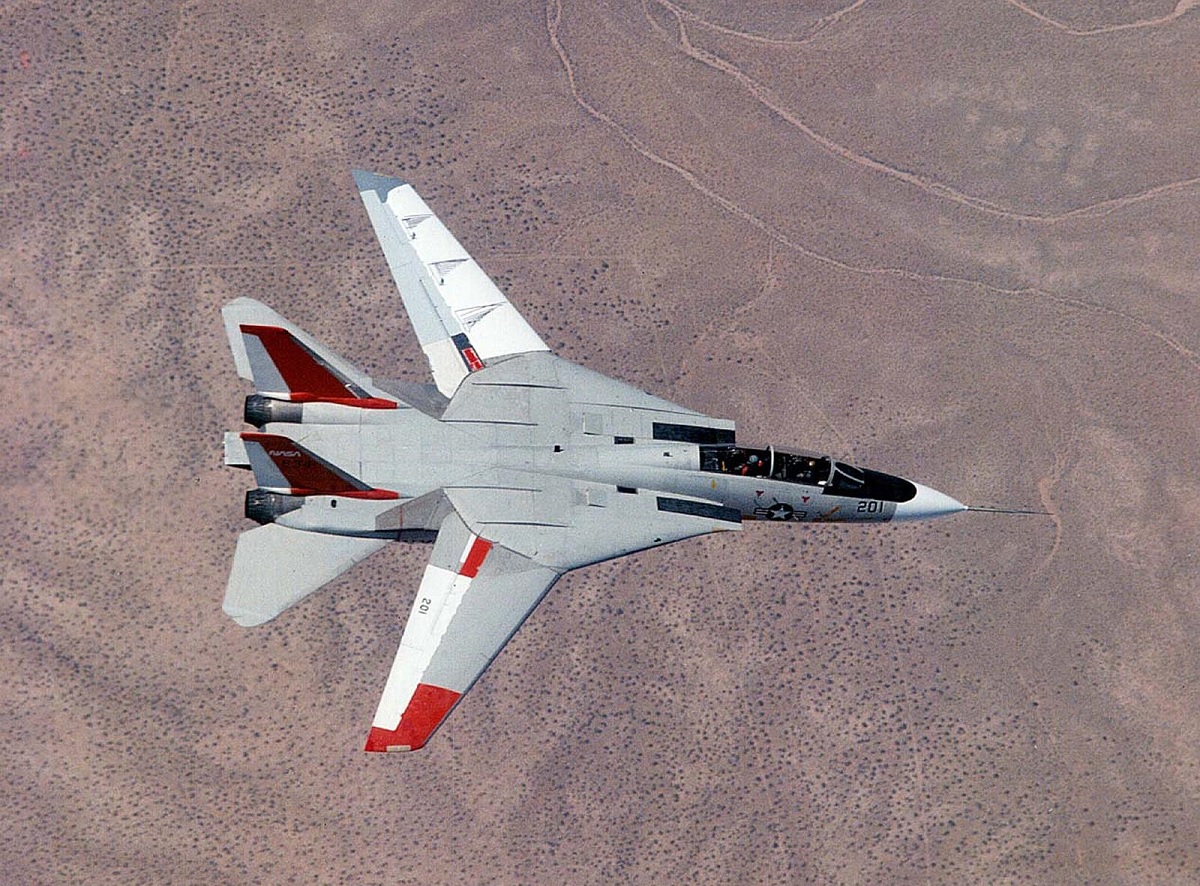Accurate or not, Top Gun does portray one thing to a tee, namely the supreme confidence and nerve of the young naval aviator and naval flight officer. Fly Navy!
Author David G Powers examines the ejection scene from the legendary movie Top Gun and asks how well this stands up to examination in real life in Issue 13 “Grumman F-14 Tomcat” of Aviation Classics magazine.
We are all familiar with the scene from the movie Top Gun, the one where Maverick and Goose enter an unrecoverable flat spin and have to eject. So, how much of that scene is factually based, and how much of it is simply artistic license? Well, as it turns out, some of both, actually.

Let’s set the scene: Mav and Goose are in one Grumman F-14 Tomcat, while Iceman and Slider are in another. Both Tomcat crews are in hot pursuit of Jester, who is flying a nimble little Douglas A-4 Skyhawk. Ice is in the lead, but just can’t quite get into position for a shot on Jester’s Scooter, whereupon he pulls out of the fight so that Mav can get the shot. The trouble is that when Ice pulls out, Mav flies through Ice’s jet wash, which buses Mav’s Tomcat to suffer a dual engine flameout. Man loses control of his bird and enters a flat spin. After much difficulty, Goose finally manages to initiate a command ejection, and both he and Mav depart their Tomcat. As we all know, Goose impacts the canopy with fatal results.
So, what portions of this scenario are at least somewhat true? The Grumman F-14 Tomcat is long been known to have tricky handling characteristics at a high angle of attack (AOA). When operating at high AOA, such as in a turning dogfight, several factors can result in an aviator losing control of the aircraft. It has also been long understood that at least the earlier model Tomcats had rather finicky engines, prone to flameout under certain conditions. As a matter of fact, the F-14A NATOPS manual specifically mentions jet wash as a contributory factor in engine compressor stalls and flameout. Now, let’s assume that while chasing Jester both Tomcats were close to their maximum AOA. When Mav flew through Ice’s jet wash one of Mav’s engines flamed out, which is plausible, and could produce enough of adverse yaw to possibly send the jet out of controlled flight, even into a flat spin. When the other engine flamed out, the aircraft’s hydraulic systems would drop offline and render the flight controls inoperative. Try as he might, Mav could not bring his Tomcat back under control.
Once the Tomcat was in the flat spin, Mav and Goose were having trouble reaching the ejection handles on their seatbacks. This is fairly accurate as in a flat spin the G forces would be trying to sling the crew out of the front of the fuselage. These `eyeballs out’ forces are rarely felt in flight, and the effect on an aviator’s limbs would make it difficult to reach the ejection handles. Being closer to the center of rotation, the back-seater would feel slightly less force, which would explain why Goose could reach the handles and Mav couldn’t. No mention is made of the lower handles fitted to each seat.
Finally, there is the question of Goose hitting the canopy. During forwarding flight a jettisoned canopy would move up and aft in relation to the fuselage, clearing the way for an unobstructed ejection. During a flat spin, there is no forward airflow over the fuselage so the canopy would remain in the vicinity of the airframe. Indeed, the later Tomcat’s NATOPS manual recommends that in the case of a spin, the aircrew manually jettison the canopy, and then wait for a few turns to ensure the canopy is out of the way. It is conceivable that Goose could hit the canopy. NASA thought about when preparing for the ARI [Automatic-Rudder Interconnect] tests, and had Grumman modify NASA 991 with a canopy that would stay put during an ejection.
The list of artistic license points appearing in the scene is quite large, but then again it’s a movie and not a documentary. The entire dogfight scene, while exciting to watch was a bit contrived, and shows all three opponents within only feet of each other, which is not really probable. It was more of a darn good demonstration of some nice, tight formation, flying. The number of rotations Mav completes during the entire sequence is sizable and not a very accurate depiction of out-of-control flight. When Mav is in the flat spin Ice radios: “Mayday, mayday… Mav’s in trouble… he’s in a flat spin… he’s heading to sea.” The only trouble here is that a spinning aircraft tends to go straight down so how could Mav be ‘heading out to sea?’ The list goes on.
Hard core, totally objective, and unimaginative reviewers have knocked Top Gun for being an inaccurate portrayal of the subject. Yes, they are correct. Accurate or not, Top Gun does portray one thing to a tee, namely the supreme confidence and nerve of the young naval aviator and naval flight officer. Fly Navy!
The following video features the flat spin and the subsequent ejection experienced by Maverick and Goose in Top Gun.
Photo by NASA

